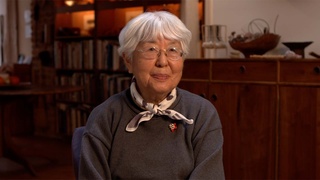Interviews
Never married
Never thought of marrying, I was too busy to think about it. Really, I was busy night and day. If I were married I couldn’t have done what I did in medicine. And I didn’t meet anyone that I thought enough to give medicine up. I really never…if I come home at two in the morning – no one said anything. If I didn’t come home at all, it was all right too. I didn’t have to do any cooking except for myself and so no, I couldn’t live married where I had to do certain things, you know. In fact my practice was such that I couldn’t afford to. I had to give up part of my practice if I were to get married, so I mean I just couldn’t…I didn’t like that idea, cause I preferred my practice to anyone I’ve ever met, you know.
Date: March 31, 2005
Location: California, US
Interviewer: Gwenn M. Jensen
Contributed by: Watase Media Arts Center, Japanese American National Museum







